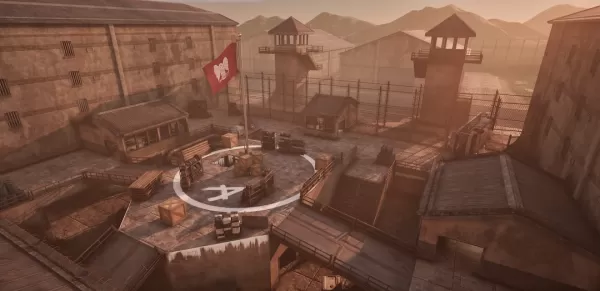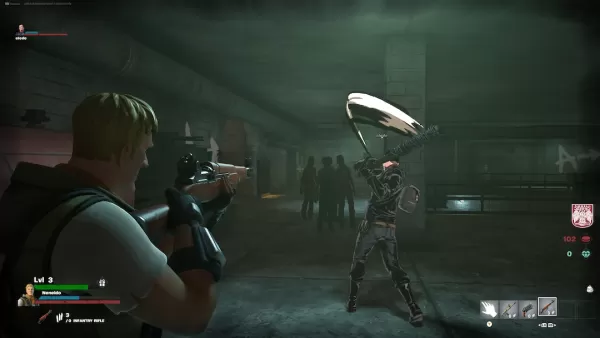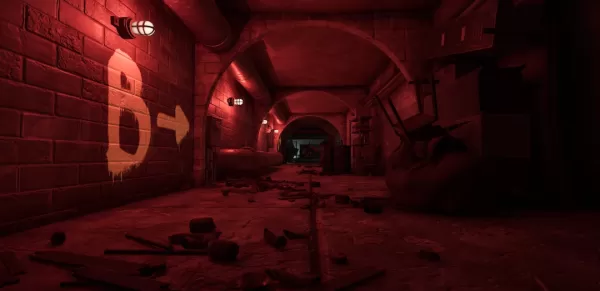The games industry has faced significant challenges recently, with layoffs, studio closures, and a drying up of funds affecting many developers. Enrique Fuentes, CEO and co-founder of Teravision Games, felt the impact of this turbulence firsthand when his team launched Killer Klowns From Outer Space, an asymmetrical horror game inspired by the 80s cult classic film. Despite receiving positive reviews, including a 7 from IGN, which praised it as "as silly and entertaining as the movie that spawned it," and garnering hundreds of thousands of views on trailers, Teravision found itself struggling post-launch amidst industry-wide difficulties.
"As you know, 2024 was a pretty tough year for the whole industry. So it was a little bit slow for us to close our next project," Fuentes explains. Despite previous collaborations with major companies like Disney, Nickelodeon, and Xbox, securing a follow-up project proved challenging. With time running out, Teravision turned to a novel solution: developing games within Fortnite. In less than a year, the studio released three Unreal Engine for Fortnite (UEFN) games, with their fourth game, Courtyard King, launching today. This game utilizes the official The Walking Dead content pack available in UEFN.

Made in partnership with Skybound, the company co-founded by The Walking Dead creator Robert Kirkman, Courtyard King is a King of the Hill-style multiplayer PvPvE game set in the iconic prison location from the series. Players battle each other and NPC zombies to control territory, using official assets from UEFN, including character models of Rick Grimes, Negan, and Daryl Dixon. Teravision also collaborated with Skybound's writers to develop the game's story and dialogue.
"Instead of a multi-year project like Killer Klowns From Outer Space, these are projects that we could put together in weeks or months," says Fuentes. "We have worked with big brands in the past... and UEFN was something that we were experimenting with... but we never imagined that was going to be the route where we're going to be engaging with a company like Skybound. But I mean, UGC, it's one of the biggest things in gaming right now."
User-generated content (UGC) is driving one of the most significant trends in gaming today, particularly through platforms like Fortnite. While services like Roblox have long embraced UGC, the concept of professional studios creating UGC is relatively new. Fortnite's Unreal Engine 5-based tools provided a perfect environment for experienced developers like Teravision to experiment and manage risk.
"It made sense because we come from an engineering background and it was a platform where we could experiment in and assume some of the risk," Fuentes explains. Teravision's experimentation led to the creation of Havoc Hotel, a roguelike shooter where players fight through levels in a hotel, earning currency to buy better weapons. The success of Havoc Hotel and its sequels, culminating in Havoc Hotel 3, which is now among Fortnite's most popular games, validated this new approach.

Teravision's game designer, Martin Rodriguez, noted that the transition to UEFN was smooth for the studio, given their experience with Unreal Engine from Killer Klowns. "For us, it just removes some of the work that we would’ve done otherwise and allows us to focus on just making better games and explore different new creative ideas," Rodriguez says.
While the engineering team adapted easily, the game design team faced unique challenges. Games like Havoc Hotel started as experiments but evolved into distinct experiences. Teravision's creative director, LD Zambrano, observed that UEFN games differ from traditional games in many ways. "A traditional experience we have had designing other [non-UEFN] games is where players relate through objectives that entice cooperation and competition, right?" Zambrano explains. "In [UEFN's] case, we have found that even though those objectives are still relevant and we still can use that game design sensibility and bring them there, I found that there are a lot of experiences that are very popular within the Fortnite ecosystem that are kind of just context."
Zambrano likens UEFN games to playground games, where the focus is on engaging interactions rather than structured competition. This approach is evident in Courtyard King, which is designed as an infinite game with no final winner. Players can join or leave matches at any time, switch teams, and engage in dynamic interactions, including betrayals, adding to the game's The Walking Dead-like atmosphere.

This new model of game development within UEFN offers a promising future for developers, allowing them to experiment without exhausting their resources while accessing large player bases and significant IP assets. "We can actually assume the risk as an indie developer in [UEFN]. Because last year, we couldn’t even think about starting a three-year project. We could do something in a few weeks with a smaller team and that completely changes the paradigm for a new developer," Fuentes says. "This is now a viable model where you can actually support an 80-person studio like we do, and we can assume the risk. It's something that if you have the right ideas, the right creativity around it, if you understand the market well enough and you have the right thinking, execution becomes possible and it doesn’t take years, it actually takes weeks, maybe months. I think this is a dream come true for indie developers."






